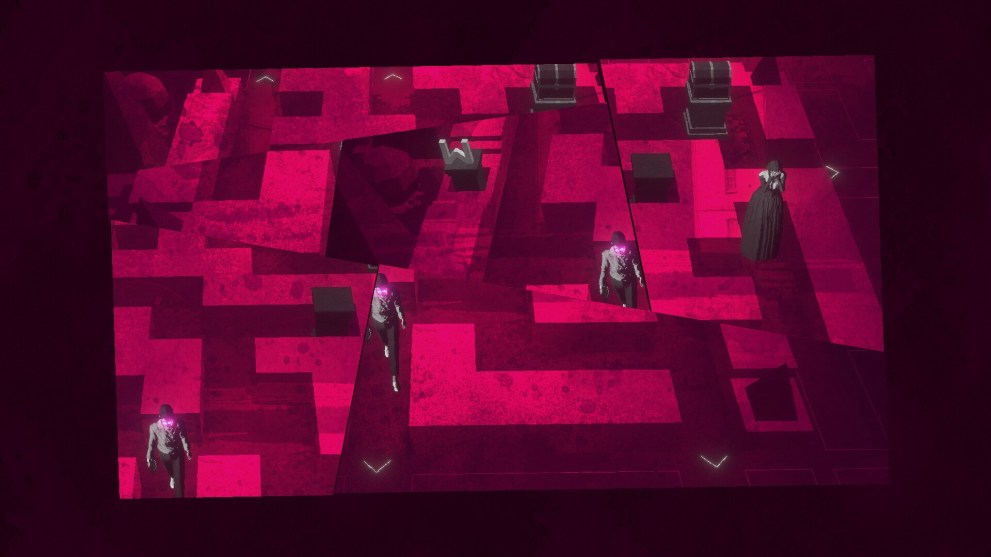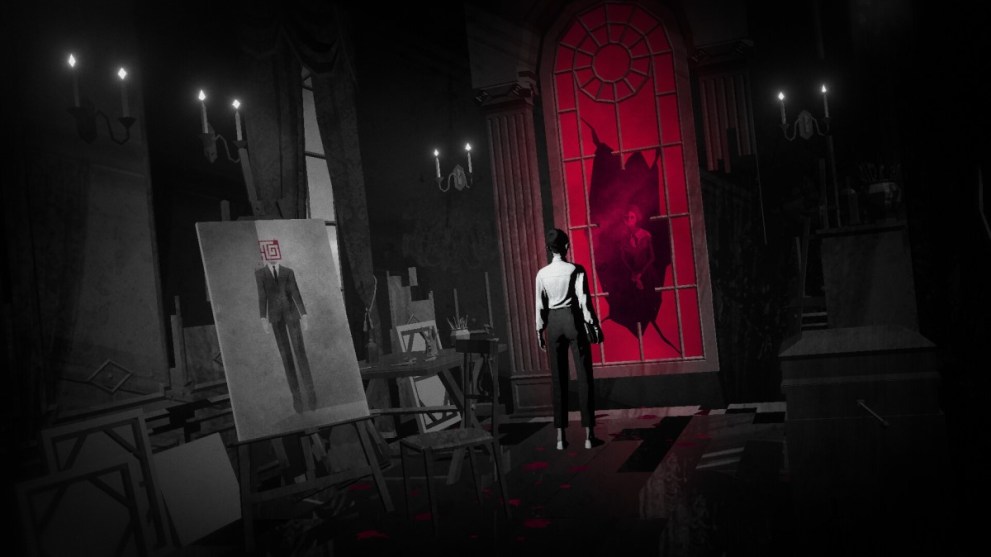Puzzle games have to strike a delicate balance. On the one hand, a game that’s too easy isn’t going to be exciting. A tricky puzzle is almost like a boss fight, and we want to put our skills to the test. On the other hand, if every puzzle is hard, then it can be a turn-off. Luckily, Lorelei and the Laser Eyes successfully finds the right balance.
Lorelei and the Laser Eyes Review on Nintendo Switch
The game begins with the unnamed protagonist being invited to a hotel for an art exhibit. As she arrives, it quickly becomes clear that things aren’t right. There’s a corpse in the courtyard, the only other guest is an old woman sharing her room, and the manager has a habit of appearing out of nowhere and disappearing just as quickly.
The hotel itself is the most pervasive puzzle of all. Simply getting from Point A to Point B is an effort at times. Many of the puzzles were tricky, but that just led to greater satisfaction when I worked them out. The non-linear design meant that if I found myself stuck on a particular puzzle, I could easily step away and explore another path I’d found. While these paths often led to a difficult puzzle themselves, I often found a new video game to debug, or an item or clue I’d need elsewhere.
The genius of the puzzles is how deceptively simple they often were, while also playing on our expectations. You might have a blank keypad where you know the code already, but a poster nearby shows the arrangement of the numbers is different than you’d expect. Elsewhere, you’ll have to use letter blocks to complete words, but paying attention to the fonts will reveal that the M is a sideways E. Many of the puzzles reward experimentation, and it’s often worth considering even the most obscure trains of thought.

While many games will give you a close-up of something you examine, here you’ll usually only get some text, which helps the environment itself feel more integrated than in many other puzzle games. I rarely felt like I could just use the notes, and even some of the recurring puzzles had a different method for each one. Debugging one video game meant talking to an NPC a few times, another might require walking through a false wall and then taking a few paths in the right order. You never feel like you have all the answers, as each new puzzle brings new challenges.
Of course, there’s more to a game than just the puzzles. The presentation of Lorelei and the Laser Eyes is retro in the best way possible. It plays like an old-school survival horror game, albeit without the combat. In the sections where you debug video games this is taken up to eleven, with old-school tank controls.
The visual design echoes the retro gameplay. Lorelei and the Laser Eyes’ graphics are decidedly old-school, and the in-game video game segments are even more retro still. Where the graphics excel is in their vision. The environments are largely monochrome, albeit with pops of red, pink, or very occasionally green. Some areas invert the color scheme to otherworldly effect. Others take it a step further, with one particularly surreal maze shattering the screen like glass.
The whole game feels like an avant-garde film. The sort of movie where drunken friars gamble with holy relics, or dinner party guests find themselves unwilling to leave. This isn’t the sort of game where everything is explained, and the narrative itself is just another puzzle.
Now, for the negatives. Some of the puzzles are punishingly difficult, and while I always felt that there was space to move forward, finding that path could be tricky. The map could have used some work and clearer labeling, as I often found myself wandering around trying to find the right door to unlock.
On the Switch, the game does away with a designated interaction button, with any buttons doing the job. This meant I often found myself interacting with something when I simply wanted to open the menu. It’s not a big problem, but it’s also not one I expected to face. Reducing the interaction to one button would have gone a long way toward making the game feel more streamlined.

My biggest complaint was the occasions where you’re chased by a floating figure. While this is telegraphed in advance, it isn’t possible to save once he appears. Being caught means a recurring puzzle where you’ll need to memorize a scene and answer a randomly selected question. It isn’t always possible to get to a save point before he appears, and getting it wrong means game over. I grew to dread these moments, especially if I’d just finished a debugging segment. While they fit thematically, this didn’t necessarily feel like a game that benefitted from game over screens.
Lorelei and the Laser Eyes isn’t a perfect game. It isn’t a game for everyone, and even fans of puzzle games like the Zero Escape series might find that this isn’t to their taste. In a world filled with Michael Bays, this is Luis Bunuel. It’s a game created with a distinct vision that isn’t out to please everyone. This isn’t a game that cares about being liked by everyone: it cares about being loved by a smaller group. It’s a puzzle box where any narrative is almost an afterthought. It’s there if you dig into it, but the greater satisfaction comes from finding a way forward.
- Intricately designed puzzles
- Beautiful visuals
- Satisfying challenges
- The controls could be better
- Frustrating instant death mechanics
- Confusing map layout













Updated: May 15, 2024 01:20 pm